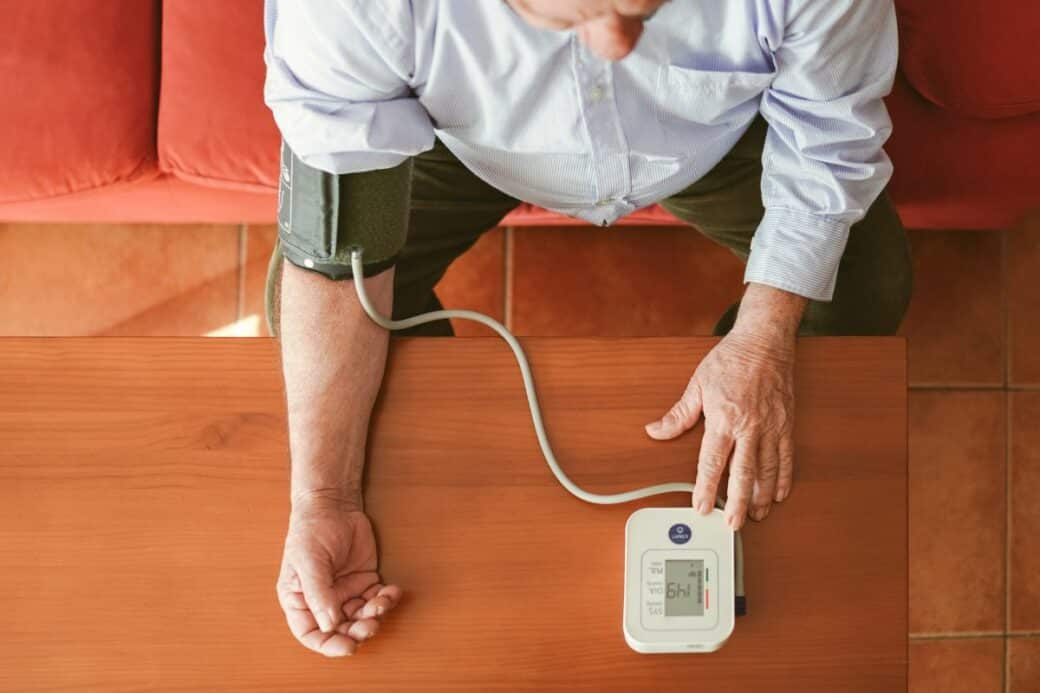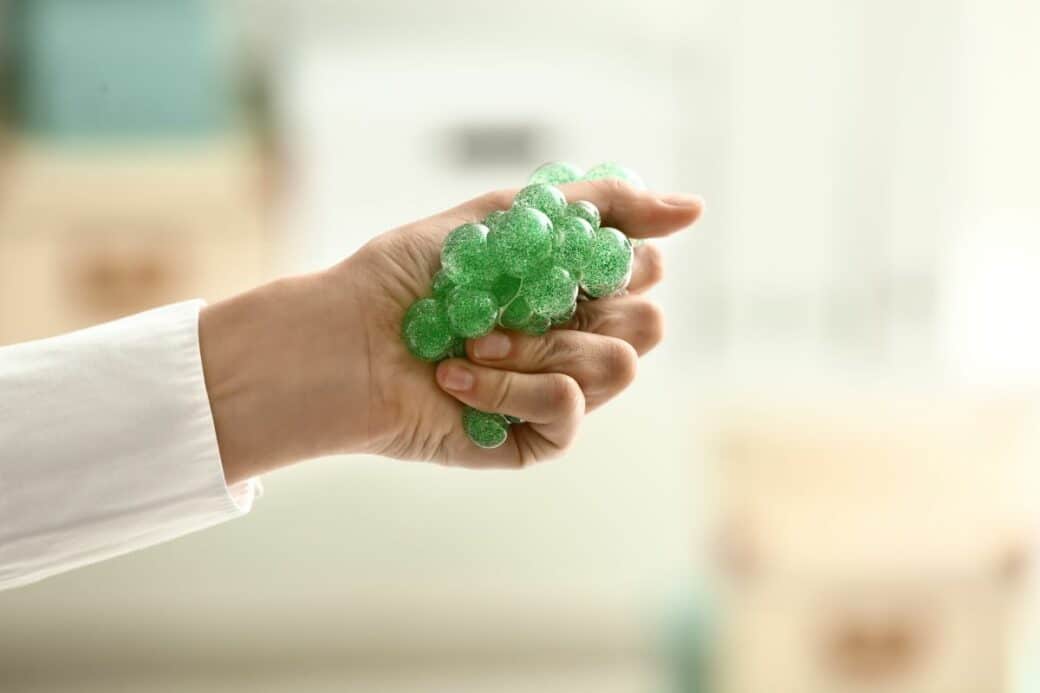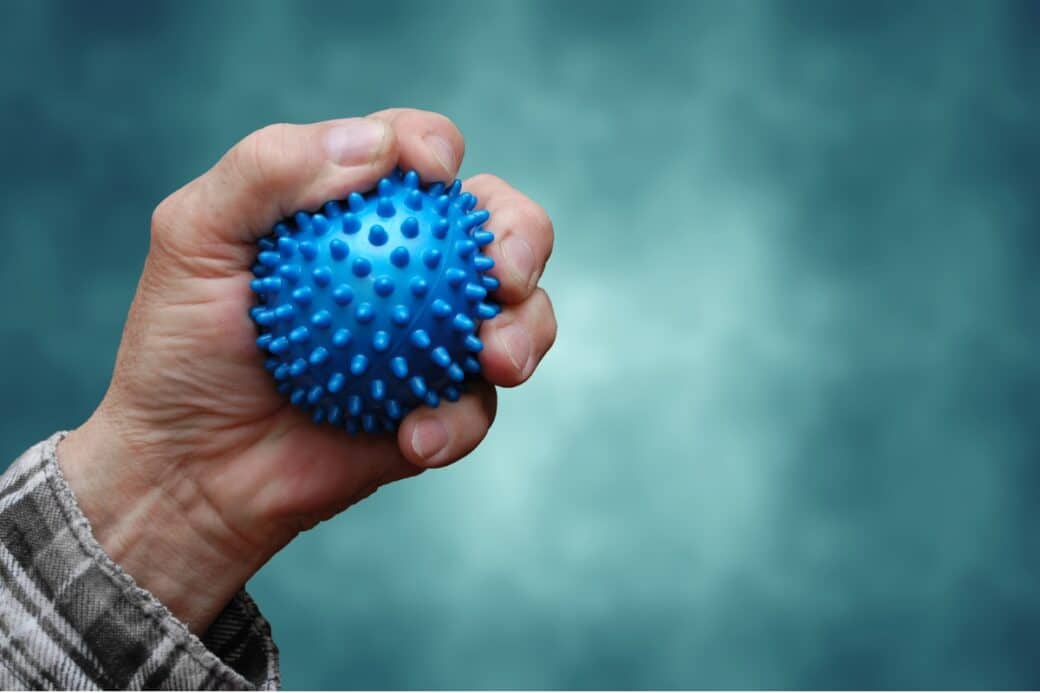Are you looking for a simple and fun way to potentially lower your blood pressure? Look no further than stress balls! These small, squishy toys may not only provide a temporary escape from everyday stress, but they could also have a positive impact on your overall health. In this article, we will explore the potential benefits of using stress balls as a tool to reduce stress and lower blood pressure. So, grab a stress ball and let’s discover how these little wonders could potentially benefit your health!

Can Stress Balls Lower Blood Pressure: Understanding Blood Pressure
Definition of blood pressure
Blood pressure refers to the force of blood against the walls of your arteries as your heart pumps it throughout your body. It is measured in millimeters of mercury (mmHg) and is represented by two values: systolic pressure over diastolic pressure. The systolic pressure is the higher number and represents the force when your heart is contracting, while the diastolic pressure is the lower number and represents the force when your heart is at rest between beats.
Normal blood pressure range
A normal blood pressure reading is typically around 120/80 mmHg. However, blood pressure can vary from person to person, and what is considered normal for one individual may be slightly different for another. Generally, blood pressure below 120/80 mmHg is considered healthy, while readings above this range may indicate a potential risk for various health conditions.
Dangers of high blood pressure
High blood pressure, also known as hypertension, is a condition where the force of blood against the artery walls is consistently too high. This condition puts excessive strain on the heart and blood vessels, increasing the risk of serious health complications such as heart disease, stroke, kidney problems, and even vision loss. It is crucial to monitor and manage blood pressure to reduce the risk of developing these complications.
Effects of Stress on Blood Pressure

Short-term effects of stress on blood pressure
When you experience stress, whether it is due to a challenging situation or an emotional response, your body may release stress hormones such as adrenaline and cortisol. These hormones can temporarily increase your heart rate and cause your blood vessels to constrict, leading to a rise in blood pressure. This short-term spike in blood pressure is a natural response to stress and is usually not a cause for concern.
Long-term effects of stress on high blood pressure
Consistently elevated stress levels can have a long-term impact on your blood pressure. Chronic stress can keep your blood pressure elevated for extended periods of time, and this prolonged increase in pressure can damage your blood vessels and strain your heart. Over time, this can contribute to the development of hypertension and put you at a higher risk for cardiovascular diseases.
Link between chronic stress and hypertension
While stress alone may not directly cause hypertension, it can certainly contribute to its development. Chronic stress can lead to unhealthy coping mechanisms such as poor diet, lack of exercise, or excessive alcohol consumption, which can all increase the risk of high blood pressure. Additionally, stress can also disrupt your sleep patterns, further impacting your blood pressure regulation. It is important to manage stress effectively to reduce the risk of hypertension.
Introduction to Stress Balls
History of stress balls
Stress balls, also known as stress relievers or squeeze balls, have been used for centuries as a therapeutic tool to alleviate stress and tension. The origins of stress balls can be traced back to ancient China, where they were made from a variety of materials such as hardened dough, rice flour, or animal bladders. Throughout the years, stress balls have evolved in design and materials, but their primary purpose remains the same – to provide a means of stress reduction and relaxation.
How stress balls are designed
Modern stress balls are typically made from soft, pliable materials such as foam, gel, or rubber. They are designed to fit comfortably in your hand, allowing you to apply pressure and squeeze them repeatedly. The soft texture and resistance of the materials used in stress balls provide a tactile and sensory experience that can be soothing and stress-relieving.
Different types of stress balls
Today, stress balls come in various shapes, sizes, and textures, catering to individual preferences and therapeutic needs. Some common types of stress balls include foam stress balls, gel-filled stress balls, spiky or textured stress balls, and even stress balls with aromatherapy features. These different variations offer a range of sensory experiences and can be tailored to suit specific preferences or therapeutic goals.
How Stress Balls Work
Principle of stress balls operation
The principle behind stress balls is simple – by squeezing and releasing them repeatedly, you engage the muscles in your hand and forearm, promoting muscle relaxation and tension release. This physical action can help redirect your focus away from stressful or anxious thoughts and provide a calming effect.
Physiological responses to using stress balls
When you squeeze a stress ball, the repetitive motion stimulates the proprioceptors in your muscles and joints, sending signals to your brain that promote a sense of relaxation and stress relief. This activity can help lower your heart rate and reduce the production of stress hormones like adrenaline and cortisol, leading to a decrease in blood pressure.
Psychological responses to using stress balls
Using stress balls can also have psychological benefits. The act of squeezing and releasing a stress ball can serve as a distraction from anxious or negative thoughts, allowing your mind to shift its focus and find a sense of calm. Additionally, the tactile sensation and repetitive motion can provide a soothing experience, helping to alleviate stress and promote relaxation.
Stress Balls and Blood Pressure Regulation
Scientific studies on stress balls and blood pressure
While stress balls have been widely used as a stress management tool, scientific studies specifically examining their impact on blood pressure regulation are limited. However, several studies have explored the effects of other stress reduction techniques, such as hand grip exercises or isometric handgrip training, which share similarities with stress ball use. These studies have shown promising results in lowering blood pressure, suggesting that stress balls may offer similar benefits.
Anecdotal evidence of stress balls lowering blood pressure
Although scientific evidence regarding stress balls and blood pressure is limited, many individuals have reported positive experiences with stress balls in relation to their blood pressure regulation. Anecdotal evidence suggests that regular use of stress balls can contribute to stress reduction, relaxation, and a potential decrease in blood pressure levels.
Mechanisms of how stress balls potentially lower blood pressure
The potential mechanisms through which stress balls may help lower blood pressure are multifaceted. Squeezing a stress ball stimulates nerve endings and engages the muscles in your hand, promoting muscle relaxation and tension release. This can trigger a cascade of physiological responses, including a decrease in heart rate, improved blood flow, and a reduction in stress hormones. Additionally, the psychological benefits of stress ball use, such as distraction from stressors and sensory stimulation, may also contribute to blood pressure regulation.
Proper Use of Stress Balls for Blood Pressure Control
Recommended duration and frequency of stress ball use
While there are no strict guidelines on how long or how often you should use stress balls, incorporating them into your daily routine can be beneficial for blood pressure control. Aim for at least a few minutes of stress ball use each day, whether it’s during moments of stress or as part of a relaxation routine. Experiment with different durations and frequencies to find what works best for you.
Techniques for effective squeezing of stress balls
To get the most out of your stress ball squeezing, it’s important to focus on technique. Start by holding the stress ball in the palm of your hand, and then squeeze it firmly using your fingers and thumb. Hold the squeeze for a few seconds and then release. Repeat this squeezing and releasing motion several times, paying attention to the sensation in your hand and the relaxation it brings.
Integration of stress ball use in daily routine
Incorporating stress ball use into your daily routine can be as simple as keeping a stress ball on your desk at work, carrying one in your bag or pocket, or using it during moments of stress or anxiety. Find opportunities throughout your day to take a few minutes for stress ball squeezing, whether it’s during a break, while waiting in line, or before bed. Making stress ball use a regular part of your routine can help promote consistent blood pressure regulation.
Limitations of Stress Balls in Blood Pressure Control
Critiques of stress ball effectiveness
While stress balls can be a useful tool for managing stress and potentially lowering blood pressure, it is important to recognize that they are not a standalone solution. Some individuals may not find stress balls effective in reducing their stress levels, and different stress management techniques may be more beneficial for them. It’s essential to explore and experiment with various stress reduction methods to find what works best for your individual needs.
Possible adverse effects of using stress balls
While stress balls are generally safe to use, it’s essential to be mindful of potential adverse effects. Using stress balls excessively or with excessive force can lead to muscle fatigue, strain, or injury. Additionally, individuals with certain medical conditions such as arthritis or carpal tunnel syndrome may need to avoid or modify stress ball use to prevent exacerbation of symptoms. If you experience any discomfort or pain while using a stress ball, it’s important to consult with a healthcare professional.
Considerations for patients with existing conditions
For individuals with existing medical conditions, such as high blood pressure or cardiovascular problems, it’s crucial to consult with a healthcare professional before incorporating stress balls or any stress management techniques into their routine. They can provide tailored guidance and recommendations based on the individual’s health status and specific circumstances, ensuring the most effective and safe approach for blood pressure control.
Alternative Stress Management Techniques for Lowering Blood Pressure
Role of exercise in blood pressure management
Regular physical activity, such as aerobic exercises, can be an effective way to lower blood pressure. Engaging in activities like brisk walking, cycling, swimming, or dancing can help improve cardiovascular health, strengthen the heart, and promote healthy blood flow. Aim for at least 150 minutes of moderate-intensity exercise or 75 minutes of vigorous exercise each week, as recommended by health experts.
Benefits of mindful meditation for blood pressure control
Mindful meditation is a practice that involves focusing your attention on the present moment, without judgment. This technique has shown promise in reducing stress and lowering blood pressure. By bringing awareness to your thoughts and emotions, meditation can help you cultivate a sense of calm and relaxation, leading to improved blood pressure regulation. Incorporating a few minutes of mindful meditation into your daily routine can be beneficial.
Diet changes that can lower blood pressure
Adopting a healthy diet can have a significant impact on your blood pressure. Aim to consume a balanced diet rich in fruits, vegetables, whole grains, lean proteins, and healthy fats. Reduce your intake of sodium, processed foods, sugary beverages, and alcohol. Incorporate foods that are naturally low in sodium, such as leafy greens, berries, nuts, and seeds. Additionally, foods high in potassium, such as bananas, sweet potatoes, and spinach, can help counteract the effects of sodium on blood pressure.
Expert Opinions on Stress Balls and Blood Pressure
Views from cardiologists
Cardiologists recognize the potential benefits of stress balls in stress management, but caution that they should not be relied upon as the sole method for blood pressure control. Stress balls can be a part of a comprehensive approach to stress reduction, along with lifestyle changes, medication, and other recommended interventions. It is important for individuals with hypertension to consult with their cardiologist for personalized advice.
Views from psychologists
Psychologists view stress balls as a useful tool for stress reduction, particularly in situations where physical actions can provide a grounding effect. The tactile nature of stress ball use stimulates sensory receptors and promotes relaxation. However, psychologists emphasize the importance of exploring a range of stress management techniques tailored to individual preferences and needs.
Views from hypertension specialists
Hypertension specialists acknowledge the potential benefits of stress balls in stress reduction and acknowledge the indirect impact they may have on blood pressure regulation. While stress balls alone may not be sufficient for managing hypertension, their inclusion in a comprehensive approach to stress reduction can contribute to overall blood pressure control. Specialists recommend combining stress ball use with lifestyle modifications, medication, and regular blood pressure monitoring.
Future Research Perspectives on Stress Balls and Blood Pressure
Proposed research areas
In the future, it would be valuable to conduct more research specifically focusing on the effects of stress balls on blood pressure regulation. Studies investigating the physiological and psychological mechanisms involved, as well as the long-term impact of stress ball use on blood pressure management, could provide further insights into their potential benefits and limitations.
Potential for technology integration in stress balls
As technology continues to advance, there is potential for integrating various technologies into stress balls to enhance their effects on blood pressure regulation. For example, sensor technology could be used to provide real-time feedback on muscle tension and pressure applied during squeezing. Additionally, incorporating biofeedback or relaxation techniques into stress balls could offer personalized and interactive stress management experiences.
Exciting developments in stress ball designs
Design innovations in stress balls continue to evolve, catering to individual preferences and therapeutic needs. From textured stress balls that provide additional sensory stimulation to smart stress balls that track physiological responses, there are exciting developments in stress ball designs on the horizon. These advancements have the potential to enhance the effectiveness and overall experience of stress ball use for blood pressure management and stress reduction.
In conclusion, stress balls have been popularly used as a stress management tool for many years. While the direct scientific evidence on their impact on blood pressure is limited, many individuals have reported positive experiences with stress balls in relation to stress reduction and potential blood pressure regulation. When used properly and in conjunction with other stress management techniques, stress balls can be a valuable tool in promoting relaxation and contributing to overall well-being. However, it is important to consult with healthcare professionals and tailor stress management approaches to individual needs and medical conditions. With ongoing research and advancements in stress ball technology, the potential benefits of stress balls in blood pressure control continue to be explored, offering promising possibilities for the future.




